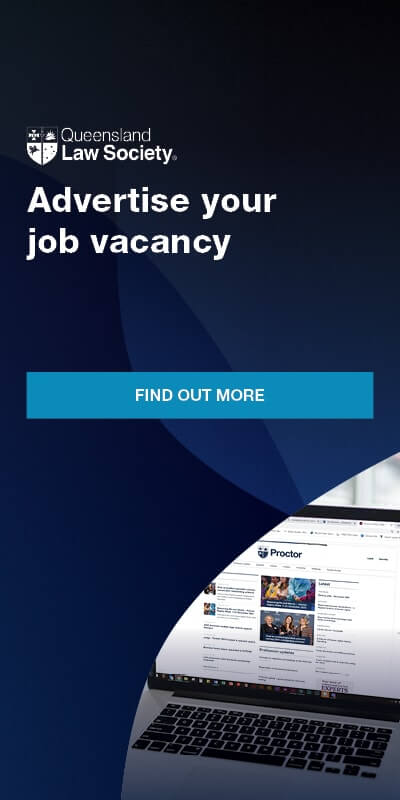Queensland’s Mental Health Week (7-15 October) falls in National #SafeWorkMonth where the focus is working together to ensure a safe and healthy workplace.
This puts a spotlight on the latest research findings from WorkCover Queensland and MAIC that shows an increase in both primary and secondary mental health injury claims arising from workplace incidents and car accidents.
Since 2017, WorkCover Queensland has seen an increase in psychological injury claims lodgements by 27 per cent.1 In 2022, of the 92,424 workers’ compensation statutory claims lodged, about six per cent relate to psychological injuries.2
Tracking the exact numbers relating to compulsory third party (CTP) claims is more difficult due to how data is kept and reported. However, of finalised claims for accidents occurring in 2021 about 22 per cent had a psychological injury component, compared to 15 per cent for accidents occurring in 2017.3
Recently a stakeholder forum for WorkCover Queensland examined this rise of mental health injury claims, particularly of secondary mental health claims. The final report into the 2023 Review of the Queensland Workers’ Compensation Scheme on 4 October, dedicated an entire chapter and nine recommendations related to mental health injuries.
Mental health injuries are expected to be a significant focus of the Queensland personal injury schemes for some time. The most critical issue is the improvement in the return-to-work processes, especially in the workers’ compensation context. The reasons for the rise in mental health injury claims needs to be carefully examined before policymakers make any fundamental scheme changes.
It is important for regulators to differentiate and clearly identify a primary versus a secondary psychological injury, so that proper trend analysis can occur, and policy responses can be developed. Not all claims with a psychological component mean higher claim costs or longer claim durations. Therefore, a proper understanding of the statistics allows a considered and measured policy response.
A primary psychological injury is where that is the primary injury. For example, a major depressive condition arising from workplace bullying or Post-Traumatic Stress Disorder (PTSD) from a car accident. It is possible in such cases that any physical injury is secondary or minor in comparison to the dominant psychological condition.
While a secondary psychological injury is where there is a physical injury followed by a diagnosed psychological injury or reaction. Think an adjustment disorder following a lumbar disc protrusion.
There has been a steady increase in claims involving a psychological injury component. However the data also indicates there is no evidence as of December 2022 of finalised claim sizes being greater than the average claim size. In other words, there are more CTP claims which include a psychological injury, but that is not increasing the amount for which such claims resolve.
Over the years, especially since COVID-19, the rise in the number of psychological injuries has been met with progress in various areas in response.
The medical and allied health profession is spearheading the recognition, diagnosis, and management of psychological injuries. Conversations with providers have been focused on the extent of training they are undergoing to identify and manage such injuries. Client’s and their family are now speaking more openly about their mental health following an accident.
In the CTP space, the greater recognition of psychological injuries is not leading to claims costs increasing. This would suggest that perhaps with quick treatment funded by the insurer, the impact of a psychological injury (and likely mostly secondary psychological injury) can be minimised – which translates to no discernible increase in claim sizes. One then really needs to consider in such cases the utility of spending thousands of dollars on psychiatric medico-legal assessments.
In the workers’ compensation space, it is a somewhat more complex picture as statutory scheme durations and costs are higher and return to work outcomes lower. Statutory claims with a secondary mental health component are also more likely to lead to a common law claim and increased claim costs. Acknowledging that there is difference in scheme data gathering and reporting, and different outcome measures, means the differential in scheme outcomes is quite disparate. This is not accidental, nor does it have any relation to how insurers are managing such claims. There are additional challenges for our workers’ compensation scheme.
Recognition of the importance of mental health comes with challenges when this is placed in the context of insurance claims, and especially so in the workers’ compensation context.
But there are still challenges.
In my view, some of the challenges include:
Scepticism – awareness and open discussion has also come with some scepticism. Suggestions that injured people are “egging it on”, increasing their claims, or lack resilience. WorkCover average claim costs for psychological injuries are higher than the total average, but a large portion of this is treatment costs – legitimate expenses. Each day I work with clients who are at their most vulnerable, yet I see the desire to beat it for themselves and their families. Making a claim is necessary to assist in recovery after injury.
Meaningful return to work – many can begin exhibiting mental health symptoms when a return-to-work program is being developed or started, and it is not meaningful. Having a person with multiple trade qualifications and expertise counting nuts and bolts whilst sitting on a crate alone in the corner of a warehouse, is not meaningful. Efforts need to be made to engage injured workers in meaningful work that will genuinely allow a return to their former role or, if that isn’t possible, which allows them to identify other potential career pathways.
Genuine employer engagement with return to work – it is necessary for an employer to engage with WorkCover, the occupational therapist and the injured worker sensibly and genuinely in return-to-work planning and implementation. This is at risk when an employer breaches the suitable duties program, directs the worker to do something different to the agreed program, turns a blind eye to co-workers who fail to assist in the process, or isolates the worker for making a claim and refusing to offer alternative duties.
Communication with an injured person – an overwhelming majority of clients say the employer did not check in with them after they were injured or when a WorkCover claim was lodged. Those clients who say their supervisor or boss reached out are always pleased and work hard to get back to their former job. There’s no magic to such conversation, but it goes a long way to offer a “how’s it going, I hope your recovery goes well and we see you back soon. Do you want us to keep you updated if there are any changes at work?”
Early intervention – plenty of insurers are doing well to agree quickly to fund psychological counselling. However, it is when the counselling or psychiatric need is more entrenched (and costing more) that many insurers will prevaricate or seek independent medico-legal opinions (interestingly at a cost usually more than what the funding request was).
But when our healthcare system takes months to get a booking with a psychologist or psychiatrist (and often weeks with a GP), we have a real systemic community-wide issue. So, it seems we have some improvements to make – especially in our workers’ compensation scheme – to reduce the incidence of mental health injuries. My hope is the policy response to mental health injury claims is based on accurate data, is measured, and addresses the fundamental underlying drivers and challenges.
Footnotes
1 WorkCover Queensland scheme statistic reports. https://www.worksafe.qld.gov.au/resources/statistics/reports/workers-compensation-regulator-statistics-reports
2 Queensland workers’ compensation scheme statistics 2021-22, https://www.worksafe.qld.gov.au/__data/assets/pdf_file/0019/114814/workers-compensation-scheme-statistics-2021-2022-full-report.pdf
3 Taylor Fry, Motor Accident Insurance Commission ‘Annual Review of Premium Components’, 31 December 2022. https://maic.qld.gov.au/scheme-knowledge-centre/presentations/








Share this article